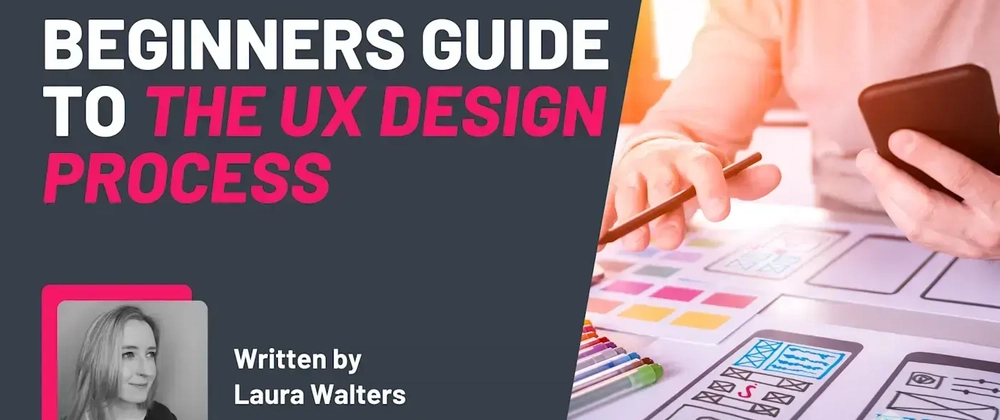👉 This post is a portion of Laura's full blog post on Zero To Mastery. To read the full article, head over there.
The UX Design Process
Ever tried navigating a website that just doesn’t work the way you expect? Frustrating, right? On the flip side, some apps just feel effortless. Everything clicks and using them is a breeze. That’s the magic of great UX design.
If you’re wondering how to create that same experience, it all starts with mastering the UX design process. This guide walks you through the key steps so you can turn ideas into designs that not only look good but work seamlessly.
What is the UX design process?
The UX design process is a roadmap for creating products that people love to use. It guides you from initial concept to final product while keeping user needs at the center. Think of it as a GPS for your project, helping you navigate toward the best solutions.
It includes steps like understanding users, brainstorming ideas, prototyping, testing, and refining your designs based on feedback.
Why is the UX design process so important?
Great UX leads to happy users, higher engagement, and ultimately more revenue. On the flip side, poor UX frustrates users and increases abandonment rates. Mastering this process helps you exceed expectations and build products that people stick with.
Step #1. Research
Research lays the foundation for the whole process. You need to understand your users, their goals, frustrations, and behaviors.
Qualitative research: Involves interviews and open-ended questions. For example, talking to gym-goers about what they wish their fitness apps did better.
Quantitative research: Gathers data through surveys or analytics. Maybe you find out 75% of respondents are unhappy with their current fitness app.
Affinity mapping: Organizes insights into patterns so you can identify major opportunities.
Competitive research: Study existing products to find gaps or opportunities. Reading negative reviews of top fitness apps, for example, can highlight areas where your app can stand out.
Step #2. Ideation
This is the brainstorming phase. Based on your research, you and your team generate as many ideas as possible, no matter how unconventional.
Examples:
- Gamifying workouts to motivate users.
- Adding easy options for sharing achievements on social media.
The goal: explore many angles and uncover innovative solutions.
Step #3. Prototyping
Prototypes bring your ideas to life. They can be:
- Sketches: Quick, rough layouts.
- Wireframes: Low-fidelity structures showing layout and functionality.
- UI mockups: High-fidelity visuals with colors, icons, and typography.
- Interactive prototypes: Clickable models created in tools like Figma, simulating the user experience.
👉 To continue learning and build real-world UX projects, check out Dan’s Complete UI/UX Design Bootcamp. The course covers the entire process in-depth, with hands-on practice in Figma and more.






Top comments (0)